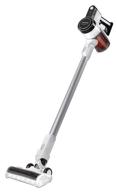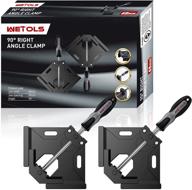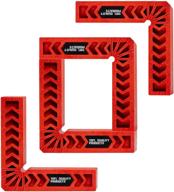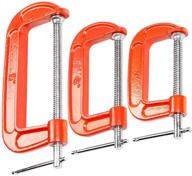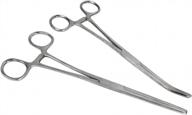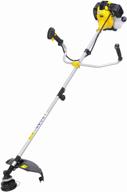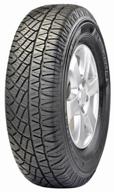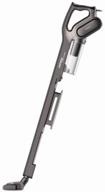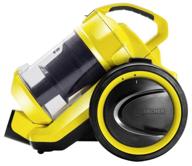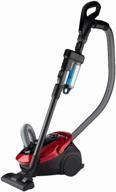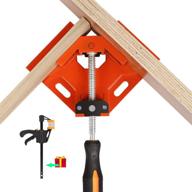The Importance of Proper Workholding
Having the right workholding tools and equipment is crucial for machinists, metalworkers, woodworkers, and any trade that requires securing workpieces. However, finding the ideal workholding solution can be a major pain point for many craftspeople and shops.
We've all been there - struggling to get a workpiece properly secured on the table or in the vise. Parts slipping out of position mid-operation or becoming marred from inadequate clamping. Valuable material wasted due to imprecise fixturing. Not only does poor workholding lead to damaged parts and scrapped work, it also drastically slows down production and efficiency.
Common Workholding Issues
- Workpieces moving, slipping, or coming loose during machining operations
- Inability to access parts of the workpiece that need machining
- Damage to workpiece surface finish from vises, clamps, or fixtures
- Warping or distortion of parts from clamping force
- Inability to securely hold oddly shaped workpieces
- Excessive setup/changeover time between jobs
Consequences of Poor Workholding
- Ruined workpieces and wasted material
- Scrap parts that don't meet spec
- Slower production and loss of efficiency
- Inability to meet customer demand/deadlines
- Increased cost from waste and extra labor
- Safety hazards from loose parts becoming projectiles
It's easy to see how inadequate workholding can quickly lead to frustration, wasted time and money, and compromise shop safety. That's why investing in the proper workholding tools and learning best practices for your applications is so critical. Keep reading to learn about workholding solutions that can optimize your machining and fabrication operations.
Top products in 🛠️ Workholding
Choosing the Right Workholding - What to Look For
With so many workholding options on the market, it can be tricky evaluating which vises, clamps, jigs and fixtures are best for your needs. Here are some key features and capabilities to look for when selecting workholding solutions:
Rigidity & Stability
The workholding system must keep the workpiece completely stationary and free of vibration during machining. Look for robust construction and rigid frames that resist flexing and distortion under load.
Secure Clamping Mechanism
The vise or clamp must provide consistent, even gripping force across the entire workpiece to prevent slipping and movement.
- Precision-ground jaw plates with serrated teeth or diamond embossing
- Large, oversized hand wheels or crank handles for applying maximum clamping force
- Integrated locks to maintain clamping pressure
Ease of Use
Quick-action vises, one-touch clamps, and tool-less adjustments allow for faster setups and changeovers between jobs.
Versatility
Look for workholding that accommodates a wide range of workpiece sizes and shapes. Modular vise jaws, adjustable clamps, and T-slot fixtures provide flexibility.
Precision & Accuracy
Precision-machined locators, dowel-aligned vise jaws, and fine-adjustment screws deliver consistent, highly repeatable setups.
Durability
Industrial-grade materials like ductile iron and hardened steel withstand high clamping pressures and resist marring or deforming fragile workpieces.
By evaluating these key workholding capabilities, you can find solutions tailored to your shop's production needs and parts mix.
Overview of Workholding Options
Workholding refers to any device that securely positions and supports a workpiece during machining operations. Here are some of the most common types of workholding solutions:
Another interesting products
Vises
Vises use two parallel jaws to clamp parts in place. Common types include:
- Mechanics vises - manual screw-type vises for metalworking
- Precision machine vises - for CNC milling and other precision work
- Sine vises - with tilted jaws to hold angled workpieces
- Rotary vises - allow rotating workpiece to various angles
Clamps
Clamps grasp the workpiece on one side. Types include:
- C-clamps, bar clamps, edge clamps
- Toe clamps - hold thin workpieces vertically
- Strap clamps - flexible band exerts clamping force
- Magnetic clamps - for ferrous metals
Fixtures
Custom fixtures hold workpieces at predefined locations and orientations.
- Jigs - guide cutting tools
- Templates - locate workpiece features
- Modular fixture plates - can be reconfigured
Chucks
Chucks have multiple jaws to grip workpieces with axial or radial symmetry.
- 3-jaw chucks - for round stock
- Collet chucks - precision chucks for small diameters
- Scroll chucks - for irregular shapes
Choosing the right workholding device depends on your workpiece characteristics and machining requirements.
Why Invest in Quality Workholding?
Upgrading to high-quality vises, clamps, and fixtures may require a sizable upfront investment, but the long-term benefits for your shop make it well worth the cost. Here are some of the top reasons to use premium workholding solutions:
Increased Accuracy and Consistency
Precision-machined quality workholding like Parlec vises and Lang modular fixturing systems allow you to achieve part tolerances within 0.0005" repeatedly. This reduces scrap rates and speeds inspection.
Faster Setup Times
Quick-release clamps like Carr Lane and vibration-damping machine vises from Kurt can trim setups down to minutes. You can change jobs in a fraction of the time.
Reduced Spoilage and Rework
Brands like Techniks and Mitee Bite prevent slippage or part movement during machining, leading to drastic reductions in scrap and rework. For example, an automotive shop cut scrap by 30% with new fixturing.
Improved Safety
Unsecured parts can become dangerous projectiles, while fly-offs damage spindles. Top-grade clamps and vises from Hainbuch, Bystronic and other industrial brands mitigate these hazards.
Long-Term Durability
High-end workholding handles heavy clamping pressures and resists marring or gouging fragile workpieces. Brands like Kurt, Strong Hand andDESTACO carry 10+ year warranties.
Ability to Handle Complex Jobs
Modular workholding systems can accommodate virtually any workpiece geometry. Brands like5th Axis and Folding Machine carry specialty vises ideal for complex parts.
While quality workholding represents a larger upfront investment, the performance benefits frequently deliver full ROI within the first year of use while taking your production capabilities to the next level.
Selecting the Optimal Workholding Solution
Choosing the ideal workholding devices for your machining applications involves carefully analyzing several factors:
Workpiece Characteristics
- Material and hardness
- Size, shape and tolerances
- Surface finish requirements
- Amount of stock to be removed
- Fixturing points and datums
Machining Operation Details
- Cutting tools and reaches needed
- Axes of machining access required
- Presence of turning/milling in same setup
- Complexity of part geometry
- Quantity of parts to run
Available Machine Tool
- Work envelop size constraints
- Power and torque of spindle
- Rigidity of machine tool structure
- Automation potential
- Accessory T-slots or fixture plates
Production Environment
- Floor space available
- Need for special environmental controls
- Operator skill level
- Job changeover requirements
- CAD/CAM and fixturing design capabilities
Armed with this detailed information, you can select workholding solutions that are sized properly for the parts, provide necessary access, accommodate the machine, and integrate efficiently into your overall production workflow.
Partnering with an experienced workholding specialist can help analyze your needs and identify the optimal mix of vises, clamps, jigs and fixtures.
ROEMHELD Catalog PDF
ROEMHELD offers a variety of PDF and CAD files for their products and solutions. These files can be downloaded from their website. The website also provides filters to narrow down the search results. ROEMHELD has over 20,000 catalogue items and unlimited possibilities for special solutions. A program summary of the ROEMHELD Group catalogue is available on DirectIndustry. Additionally, all Römheld GmbH Friedrichshütte catalogs and technical brochures can be found on DirectIndustry.
Similar products
Roemheld Rotary Coupling
ROEMHELD offers a variety of rotary couplings for supplying fluid to rotating or swiveling fixtures. These couplings are ideal for rotary index tables, rotating pallet changers, and other similar applications. Some of the available rotary couplings from ROEMHELD are:
- Single passage rotary couplings with connections of G1/4 and pipe Ø 8 mm, with a maximum operating pressure of 500 bar.
- Six passage rotary couplings with a maximum operating pressure of 500 bar, which supply pressure oil to rotating and swiveling installations.
- Angle rotary swivel joint with one passage, with M85 - G1/4 connections and a maximum operating pressure of 400 bar.
- Straight rotary coupling with one passage, which should be mounted at the rotational center to prevent side loads.
- CLR-9281-136-F rotary coupling with a maximum pressure of 150 PSI, ideal for supplying fluid to rotating pallet changers.
- CLR-845-F straight rotary coupling with a weight of 1.23 LBS and free shipping.
Overall, ROEMHELD offers a range of rotary couplings suitable for various applications, with different connection types, maximum operating pressures, and mounting options.





